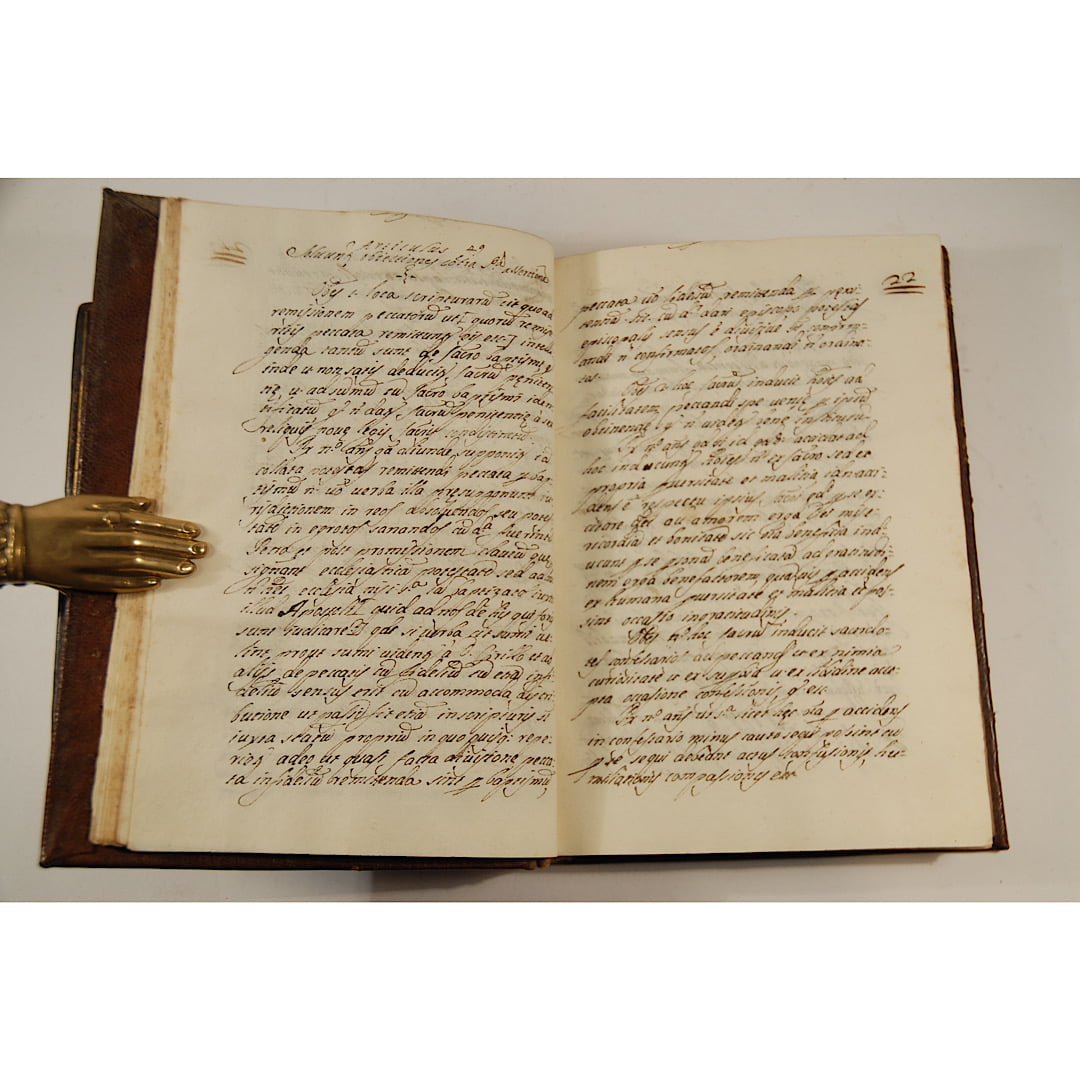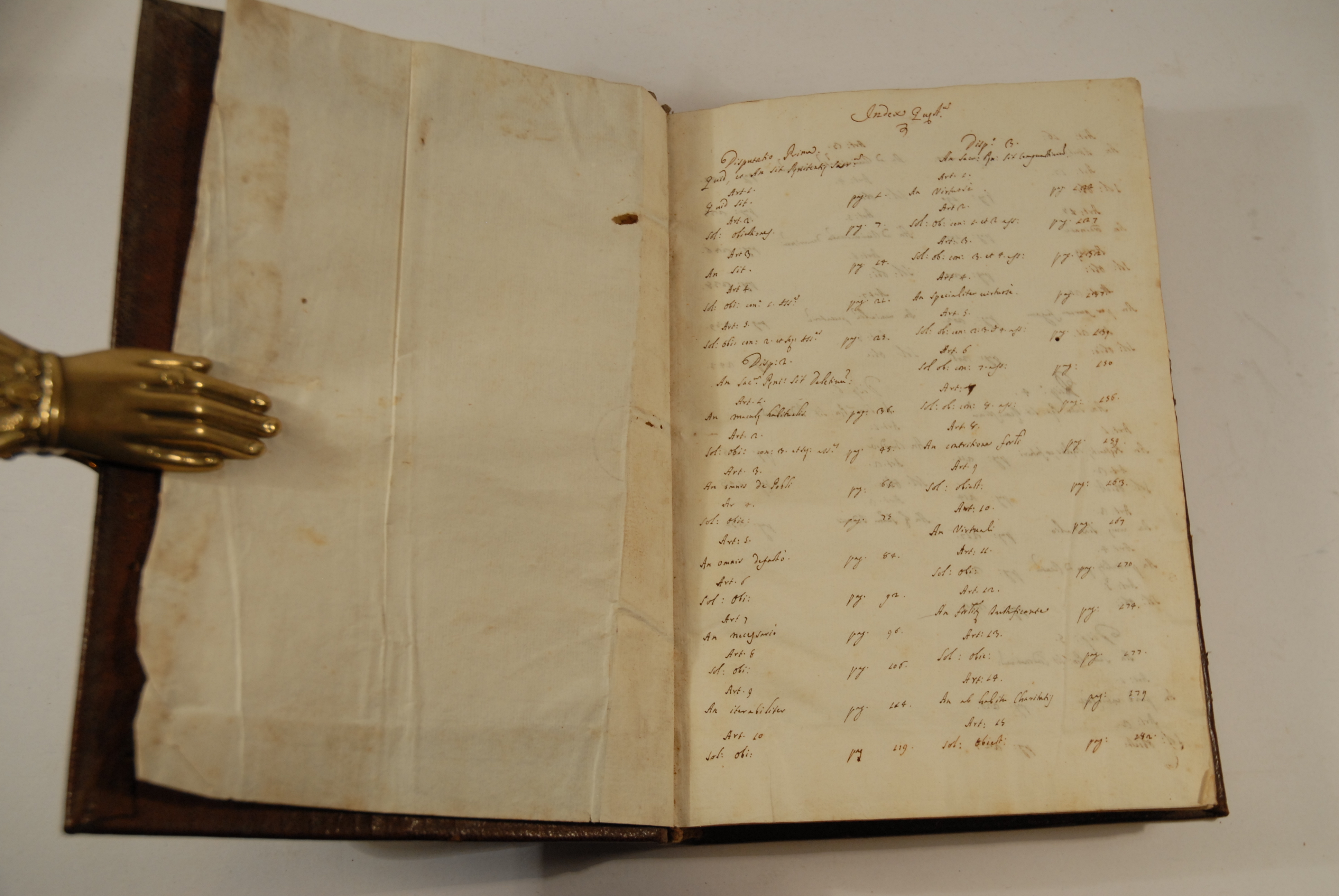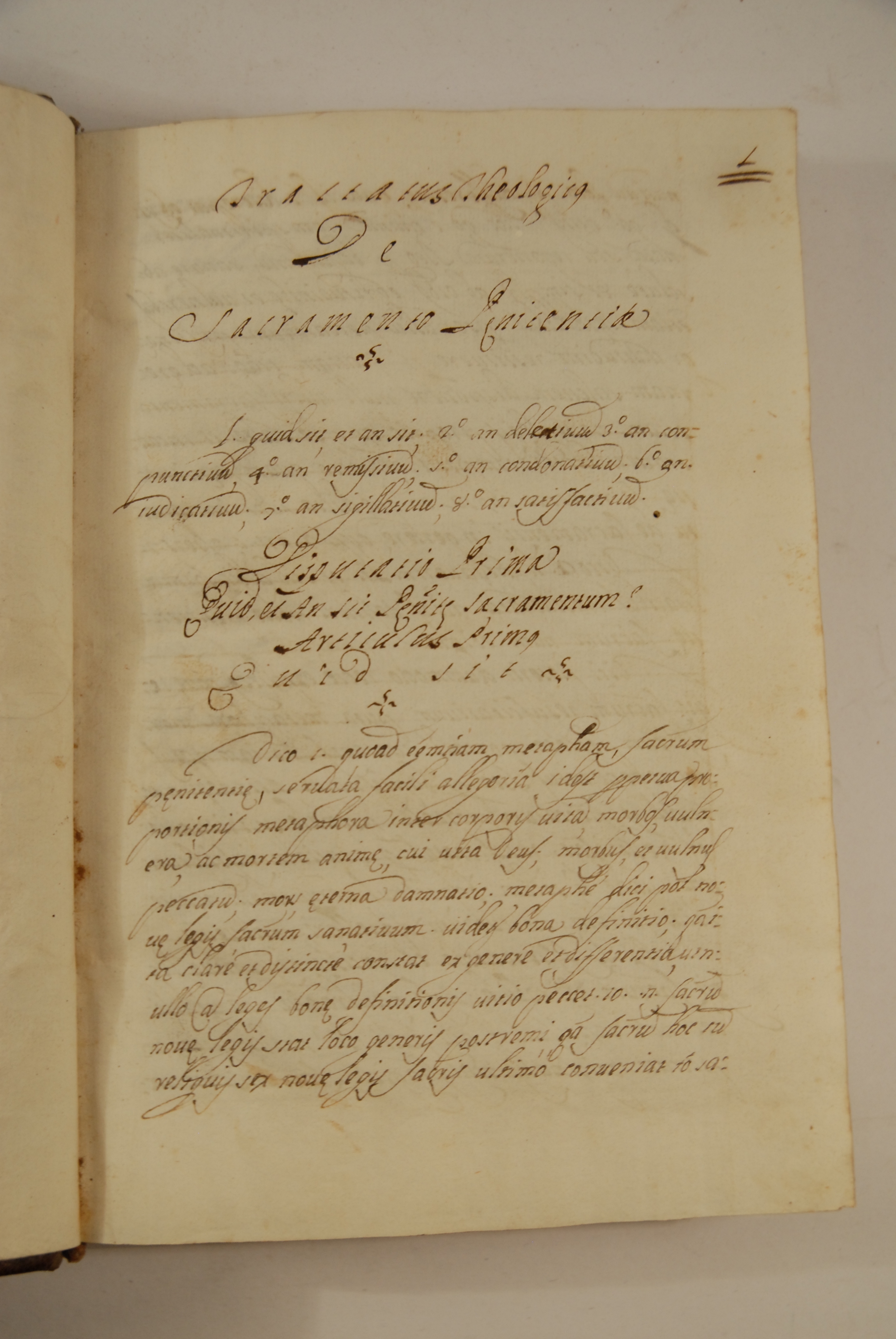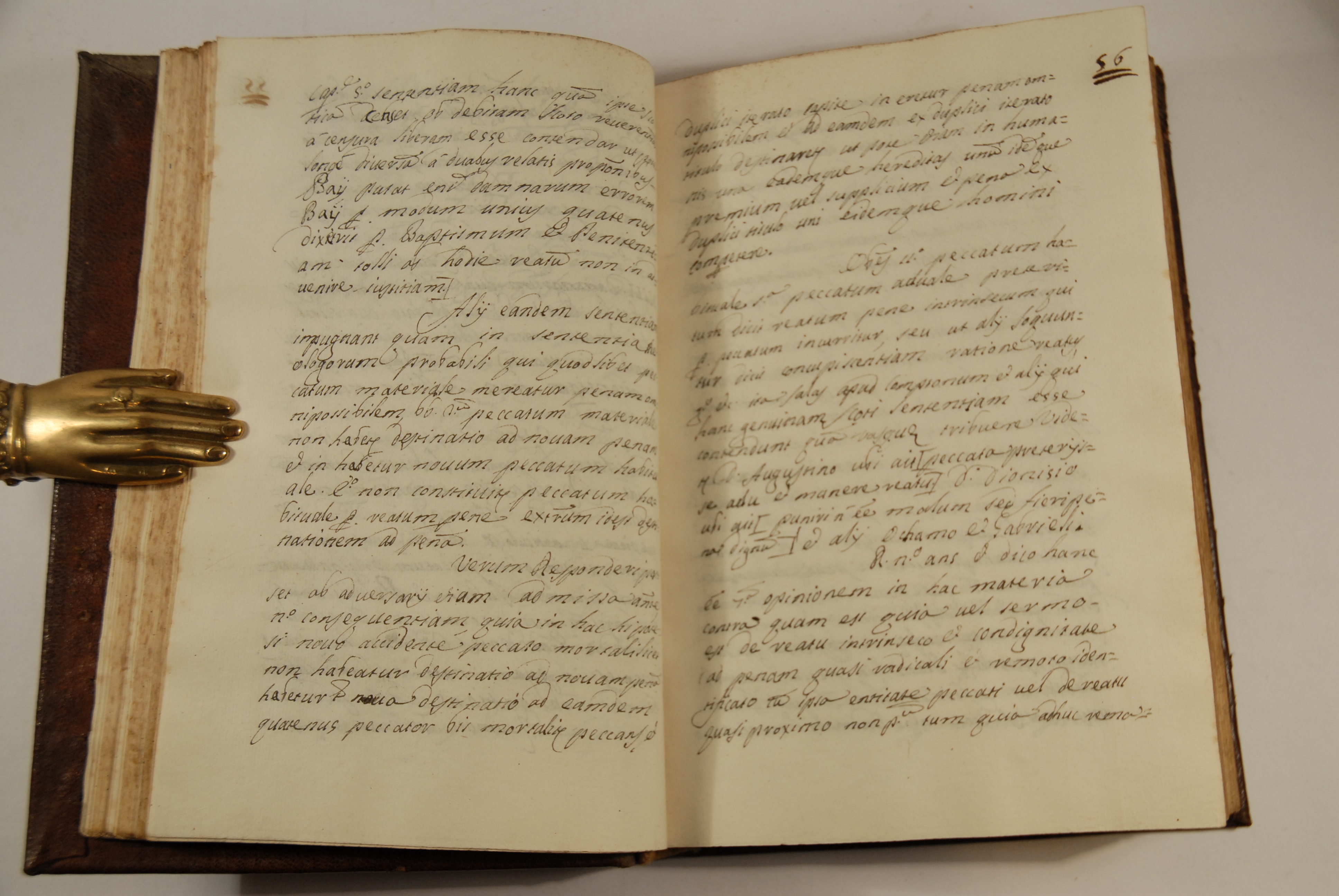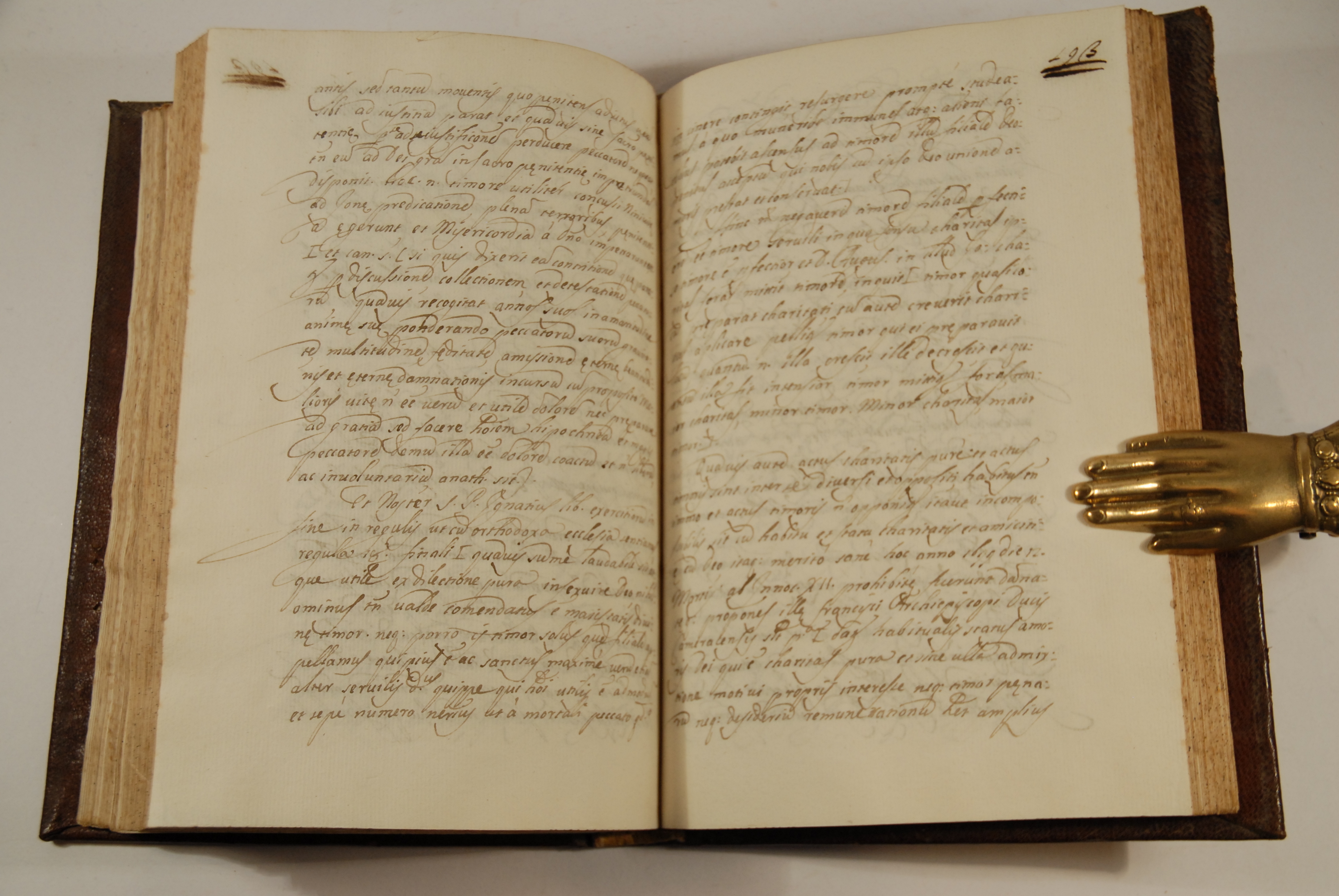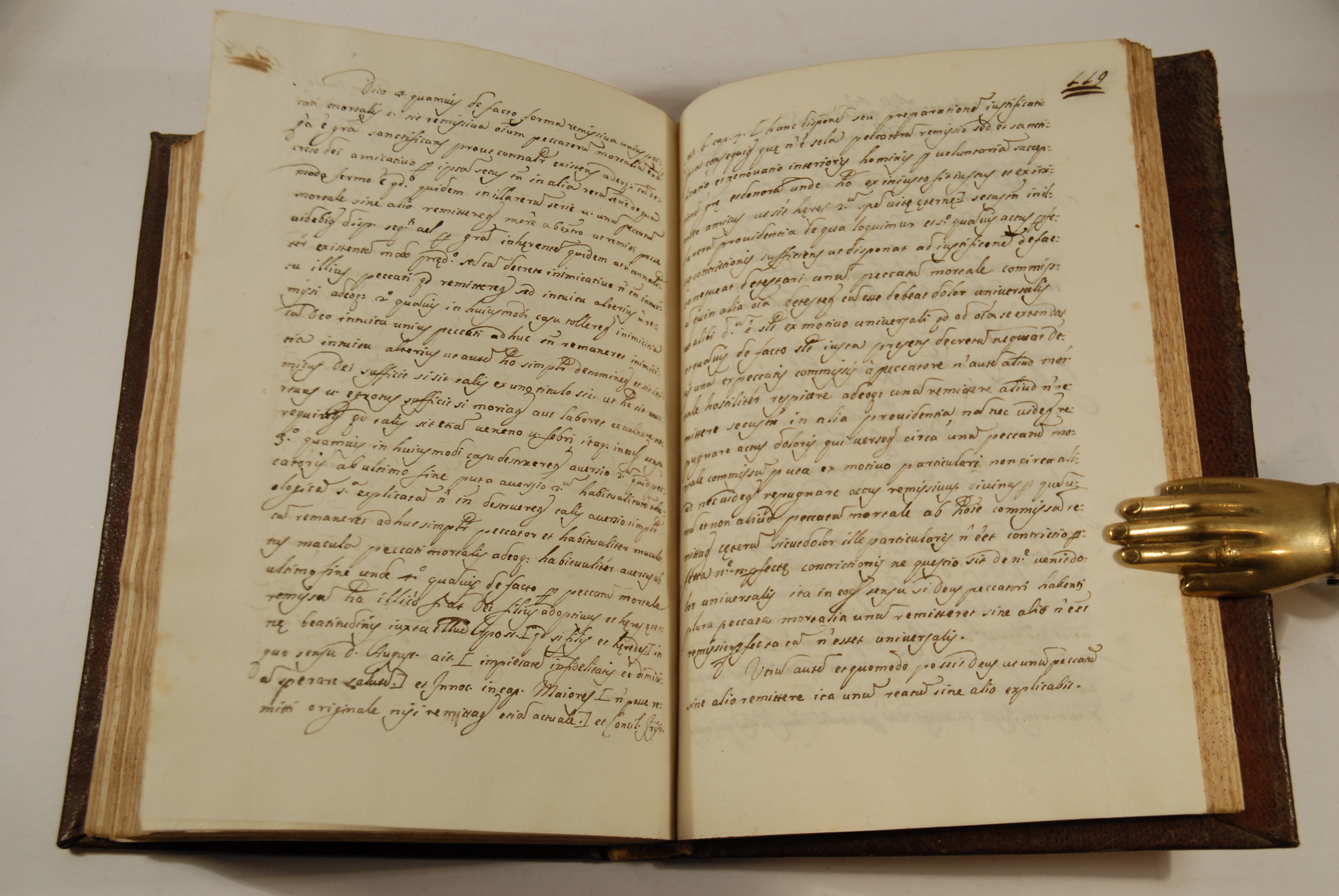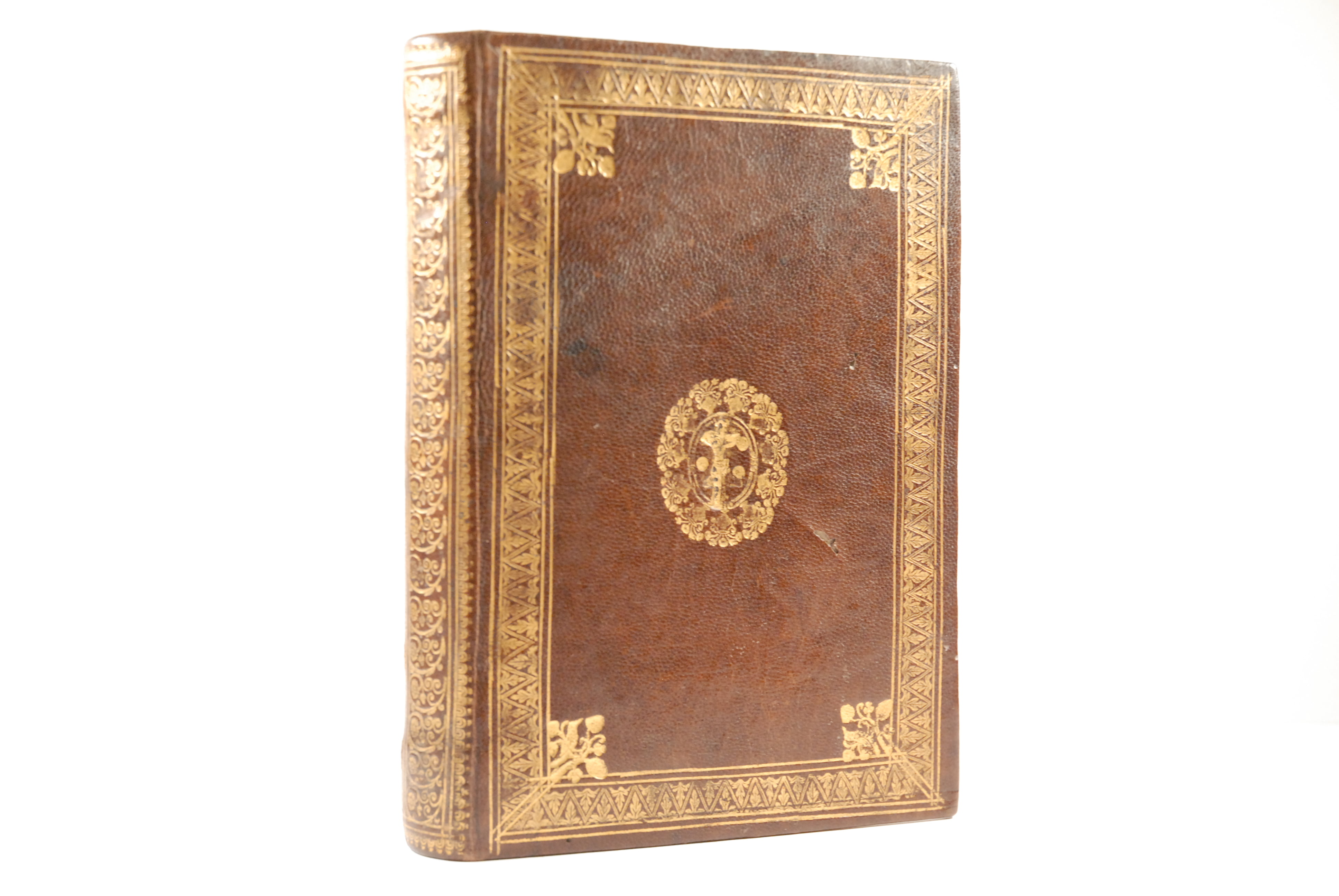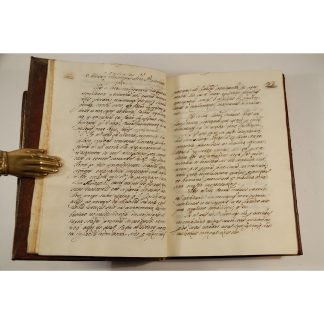ANONYMOUS
FINE SICILIAN BINDING
Tractatus theologicus De Sacramento Poenitentiae.
Manuscript, Sicily, mid-seventeenth century.£2,350.00
4to. ff. (iii) 251. MS, on paper, Latin. Mainly brown-black ink in secretary hand, typically 26 lines per page, a.e.g. Small marginal stains to a couple of ff., marginal light foxing in places, the odd ink burn affecting a letter, tiny interlinear worm hole to first gatherings. A very good, well-margined copy on fine paper, crisp and clean, in contemporary Sicilian (probably Palermo) morocco, one fore-edge a little worn, very minor worming to upper corner. Double gilt rule to outer edge, leafy decoration gilt to outer border, central panel with double gilt rule border, large gilt fleurons with birds to each corner, central ovals with Crucifixion and Virgin and Child to upper and lower cover respectively, gilt border with urns and fleurons to ovals. Spine with double gilt rule border, unusual lateral gilt fleurons within.
The binding is traceable to late C16 Sicily. The leafy border, solid cornerpieces, and compact gold-tooling of the centrepiece strongly recall the Venetian-style bindings made in the second half of the C16 for the notarial manuscripts of the Ferrero family of Palermo (Davis III, 345; Nixon, ‘Pierpont Morgan’, 48).
The ‘Tractatus theologicus’ is a theoretical disquisition on the sacrament and practice of penance. Like similar seventeenth-century ms. ‘tractati de sacramento poenitentiae’, it follows the structure of Section XIV of the Council of Trent, held on 25 November 1551, which discussed the nature of penitence and its stages (contrition, confession, administration, absolution, and satisfaction). The ‘Tractatus’ has a rigid structure whereby a section on a specific issue is followed by one on its counterarguments. For instance, the section where penance is described as a sacrament instituted by Christ himself in addition to baptism for the remission of sins during one’s lifetime, is followed by a challenging section presenting opposing views like those of the Novatians (who did not believe in the remission of sins), with references to the works of Jesuit theologians like Suárez, Vásquez, Hurtado and Bellarmine. The arguments of the Council of Trent are integrated with references to canon law, including the codification of the priest’s ‘iudicatio’ of the penitent and the ‘sigillum’, the priest’s vow of secrecy (a section mentioned in the index but apparently absent from the book).
The technical nature of this handsomely-bound ms. suggests it was probably owned by a canon lawyer or a scholar, perhaps professor, of moral theology. In C17 Palermo, canon law and moral theology (in the form of ‘cases of conscience’) were taught at the new university founded under the auspices of the Society of Jesus. The theological principles and canon law regulations of the sacrament of penance were given special attention, having acquired greater importance and complexity after the Council of Trent’s reaffirmation of the fundamental function of priests in judging and absolving sins.
See P.F. Grendler, The Jesuits and Italian Universities, 1548-1773, Washington, D.C., 2017.In stock


